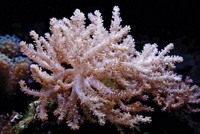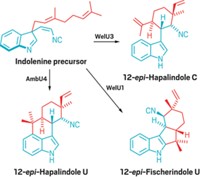Advertisement
Grab your lab coat. Let's get started
Welcome!
Welcome!
Create an account below to get 6 C&EN articles per month, receive newsletters and more - all free.
It seems this is your first time logging in online. Please enter the following information to continue.
As an ACS member you automatically get access to this site. All we need is few more details to create your reading experience.
Not you? Sign in with a different account.
Not you? Sign in with a different account.
ERROR 1
ERROR 1
ERROR 2
ERROR 2
ERROR 2
ERROR 2
ERROR 2
Password and Confirm password must match.
If you have an ACS member number, please enter it here so we can link this account to your membership. (optional)
ERROR 2
ACS values your privacy. By submitting your information, you are gaining access to C&EN and subscribing to our weekly newsletter. We use the information you provide to make your reading experience better, and we will never sell your data to third party members.
Biological Chemistry
Fungi make isoquinolines
Long thought to be produced primarily by plants, these medically useful compounds are also made by fungi
by Sarah Everts
April 18, 2016
| A version of this story appeared in
Volume 94, Issue 16
By peering at a mysterious biosynthetic gene cluster in the common compost heap fungus Aspergillus fumigatus, a team of researchers led by Cornell University’s Frank C. Schroeder and Nancy P. Keller of the University of Wisconsin, Madison, has discovered that the microorganism unexpectedly makes a variety of isoquinolines. Scientists long thought that these natural products—based on a heterocyclic scaffold composed of a benzene ring fused to a pyridine ring—were produced primarily by plants. Isoquinolines are incredibly useful scaffolds: Members of the family are used as anesthetics, vasodilators, antifungal agents, and disinfectants. Researchers may want to mine other fungi—many of which also possess similar biosynthetic gene clusters as the one in A. fumigatus—for new, potentially useful isoquinolines or harness fungi to produce existing ones. The team found that the isoquinolines—called fumisoquin A, B, and C—made by A. fumigatus were synthesized from the amino acid tyrosine, through a sequence of phenol hydroxylation, N-methylation, and oxidative cyclization steps reminiscent of plant isoquinoline biosynthesis (Nat. Chem. Biol. 2016, DOI: 10.1038/nchembio.2061). However, the plant and fungal biosynthetic genes show no homology, suggesting that the ability to make these compounds evolved independently, yet settled on the same synthetic strategy—an example of convergent evolution.







Join the conversation
Contact the reporter
Submit a Letter to the Editor for publication
Engage with us on Twitter